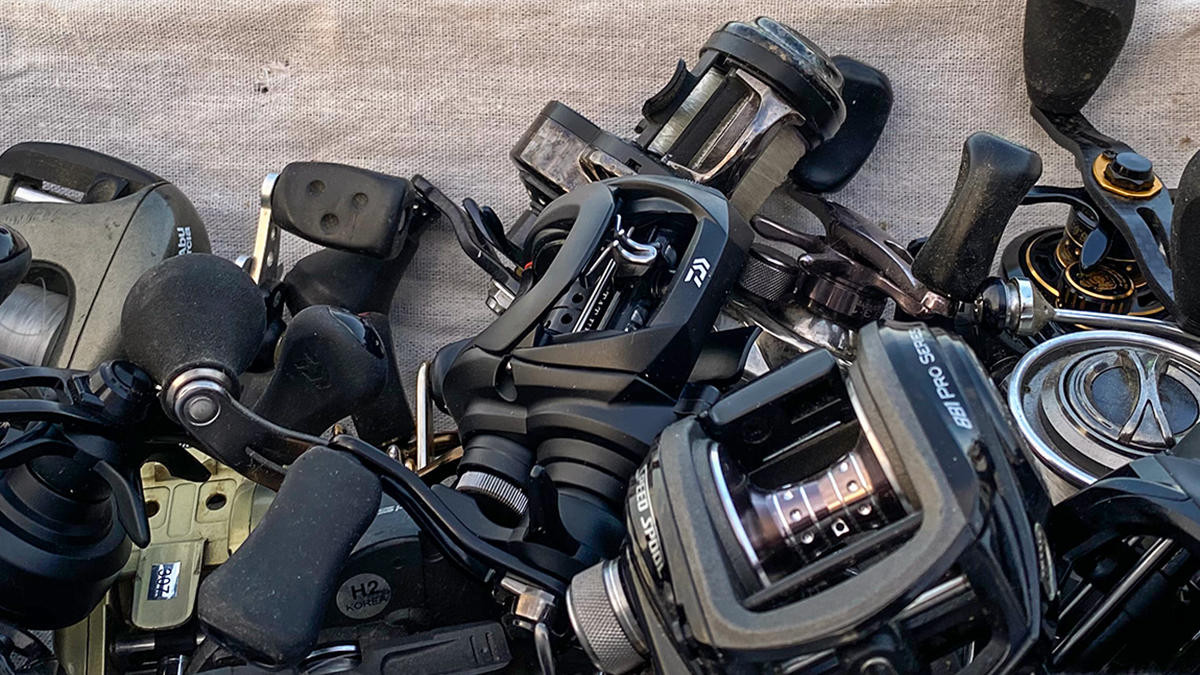Bass are ambush predators that use all kinds of cover to pursue their prey. In many parts of the country, heavy grass mats are the most productive areas, but finding and accessing bass in seemingly endless and impenetrable cover can be daunting. Pro bass angler, Keith Carson, is a Florida flippin’ junky and surprised us with a few overlooked tips for flippin’ bass in heavy cover.
TACKLE & GEAR LISTING
- Berkley PowerBait Rocket Craw
- Berkley Fusion 19 Heavy Cover Hook, 4/0
- ARK No Chip Tungsten No-Insert Flippin Weight, 1oz
- Bullet Weights Rubber T-Stop
- Abu Garcia Veracity Casting Rod, 7’9″ Heavy
- Abu Garcia REVO SX Gen 4 Casting Reel (Replaces REVO Premier), 7.3:1
- Berkley X9 Braided Line Lo-Vis Green, 65lb
- Minn Kota Fortrex Trolling Motor
- Hydrowave H2 Electronic Feeding Simulator
- Crestliner MX 21 | 21 Foot Tournament-Level Bass Boat
- Mercury Pro XS 200hp
- Costa Del Mar Permit Sunglasses
Carson’s flipping and pitching advice:
- Find Depressions: big expansive flats are often shallow and featureless, but when a chunk of bottom breaks off and becomes a floating mat, it leaves behind a depression that is deeper than the surrounding flat. These depressions are highly sought after by some of the system’s biggest bass and easily identified.
- Rod Action: The standard rod for flippin’ is the proverbial “Broom Stick.” Thick and stout with fast actions and very little tip. The school of thought was that you need leverage to pull the fish from dense cover, but what Carson finds is that the only pulling you’re doing is the hook from the bass’s mouth. Keith opts for a softer rod to avoid creating large holes caused by heavy gaged hooks. A stiff rod also causes slack, which can allow the hook to fall out.
- Rod Angles: Anglers will often hold their rod tip high when flippin’ and reel down for big sweeping hooksets. Keith has seen an uptick in his landing percentage by holding his rod horizontally — this reduces over setting the hook, which again creates large holes that don’t keep bass pinned.
- Nothing Over a 1-ounce Weight: Some mats are so thick and impenetrable that anglers are tempted to use hefty weights to bust through the canopy. Years of experience have taught Carson to pass on these mats if a 1-ounce weight isn’t up for the job. The issue with such large weights is that they burst the fish’s mouth open during the hookset, after which the hook comes flying out with it.
- Peg it and Fix Weight Location: Pegging is a must when coming in and out of thick mats cleanly. Many anglers have made the bobber stop-style pegs a popular choice, but they also have an easily overlooked issue. Bobber stops allow the weight to slide freely between the hook and stop, creating a wrecking ball that can pop hooks out like a plug knocker when hung on a limb. Keith’s solution is to use the good old fashion inserted peg, which allows the weight to slide up the line but stay up the line and away from the hook while fighting the fish.
















